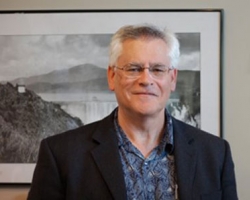There is a belief, no doubt fallacious, that back in 1966 something was added to the drinking water in Chula Vista – smart pills of some kind – that affected the high school graduates. It seems that that year turned out a high percentage of graduates who went on to become outstanding individuals in their particular field.
I was speaking to Mark Rogers the other day. He is a graduate of Hilltop High School, class of ’66.
In a few short months he will be retiring as the general manager of the Sweetwater Authority, the agency that supplies us with our water.
Rogers is one of those who came to the South Bay courtesy of the U.S. Navy. It was not of his doing, however, being only 2 years old at the time. His father was a career Navy man and had a tour of duty here. And like many others, when it came time to retire, the elder Rogers figured why not return?
When the Rogers family returned they settled near Hilltop High School. There Mark went to school, from elementary to Hilltop Junior and then on to Hilltop High. And like many others he went on to Southwestern and then San Diego State University.
While at Southwestern he showed an ability, and also a liking, for writing. This was noticed by a Southwestern College professor, Tom Pasqua, who encouraged him to pursue studies in that field. He did, majoring at State in journalism and art.
While at Southwestern he was a staff member of the school’s newspaper, the Athapascan, as it was known then. Not being completely satisfied with his calling at that time, he went back to State a couple of years later and received another degree, this one in accounting.
The accounting degree must have served Rogers well because it was that study that carried him through his many years in the business of supplying water for residents and businesses in the South Bay.
First at California American Water and then in the latter part of his career at the Sweetwater Authority, he made his way through the chairs – as they say – until he reached the top post: general manager. He credits much of his success in his later appointments to his mentor Dick Reynolds who, in his day, could have been referred to as the Mr. Water of the South Bay.
Rogers has nothing but praise for the Sweetwater Authority and for the many persons who make up the organization.
For one, they are not afraid to take chances, that is, to do innovative things that they think will improve business and, as a result, bring better service to the customer.
He cites, for example, the person of Frank Kimball and others of his generation who had a vision for the Sweetwater Valley.
They knew that the only thing missing was a generous supply of water. In 1888 we, therefore, saw the construction of the Sweetwater Dam, the structure that anchors the valley at its eastern end.
In later years other visionaries saw the need for another dam, this one known as the Loveland Dam that is further up river. It is interesting to note that this dam was built in the middle of World War II, a time when most natural resources were going to aid the war effort.
The dam was, therefore, built when other units were vying for those same raw materials.
Citing some of the modern day accomplishments of the water district, Rogers reminds us that the water authority, using only the water on hand, could supply its customers for a full year.
Water is, of course, purchased from other sources, the Colorado River, for example. He says that the consumer just wants three things: potable water that is good for consumption; an adequate way of receiving it and all this for a fair price. The water authority, says Rogers, does those three things.
Mark Rogers married Jean Atherton, a high school classmate, in 1972. They were divorced in 2009.
They have two sons, Neil, now 30 years old, and Kyle, 21.
He has no plans as to what he will do in retirement.
About the only thing that is certain is that he will play a lot of golf. It is my guess, however, that the business world has not seen the end of Mark Rogers.

